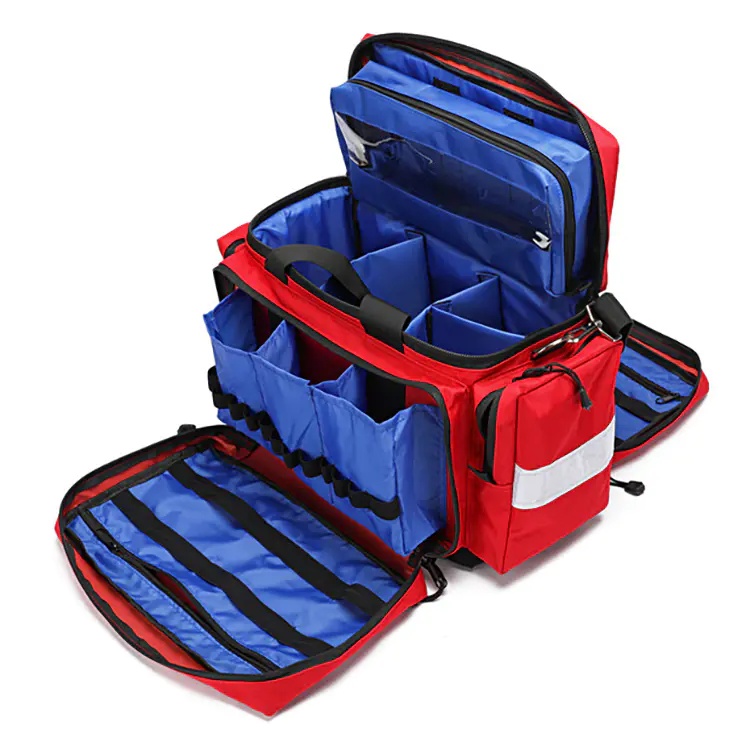Emergencies can happen at any time, and being unprepared can turn a manageable situation into a life-threatening one. One of the most effective ways to ensure safety during unexpected accidents is to have a trauma first aid kit readily available at home. Unlike a basic medical kit that usually contains band-aids and antiseptic wipes, a trauma first aid kit is designed to handle severe injuries such as heavy bleeding, burns, fractures, or shock. Having one within reach can make the difference between stabilizing a condition until professional medical help arrives and letting a situation spiral out of control.
This article explores what makes a trauma first aid kit essential for home use, what it should contain, how to choose the right one, and why every household should prioritize investing in one.
Home is often considered the safest place, but statistics show that most accidents occur within it. From kitchen burns and deep cuts to falls resulting in broken bones, emergencies can happen when least expected. A trauma first aid kit ensures that you are not left helpless in critical moments.
Unlike a standard first aid box, trauma kits are specifically designed for rapid response to severe injuries. They include lifesaving tools that help stop bleeding, stabilize wounds, and prevent shock. The ability to address these issues immediately while waiting for medical professionals can greatly increase survival chances.
When selecting the best trauma first aid kit for home emergencies, it is important to know what items are typically included. A well-structured kit generally contains:
Bleeding control supplies – Dressings, gauze, and tourniquets for stopping heavy bleeding.
Burn treatment – Specialized burn dressings and gels to relieve pain and prevent further skin damage.
Fracture and sprain support – Splints and bandages for immobilizing injuries.
Airway and breathing support – Tools like CPR masks that aid in resuscitation efforts.
Protective equipment – Gloves and masks for safe treatment of injuries.
Each of these items is organized to allow quick and easy access during high-stress situations. The design of a good trauma first aid kit focuses on speed, clarity, and effectiveness.

Selecting the right trauma first aid kit can be overwhelming given the wide range of options available. However, there are several factors that can help guide your decision:
Comprehensiveness – The kit should include items that cover a wide range of possible injuries, not just minor cuts and scrapes.
Ease of organization – Compartments and clear labeling make it easier to find the right tool quickly.
Durability of packaging – The case should be strong, impact-resistant, and capable of protecting supplies from moisture or dust.
Compact but practical size – It should fit easily in the home, yet have enough supplies to deal with serious emergencies.
Clear instructions – Especially for households with no medical professionals, guidance materials are crucial for proper use.
Understanding the types of emergencies that occur in homes highlights the importance of having a trauma kit:
Cuts and lacerations – Cooking accidents can lead to severe bleeding that requires dressings or even a tourniquet.
Burns – Hot water, flames, or kitchen appliances can cause burns that need immediate cooling and protection.
Falls – Broken bones or sprains require splints and secure bandaging to prevent further damage.
Choking or breathing emergencies – An airway support device can be lifesaving.
Shock – Basic supplies for monitoring and stabilizing a person's condition help until emergency services arrive.
With the right trauma first aid kit, you can respond quickly and effectively to these situations.
To fully appreciate the importance of trauma kits, it helps to compare them with standard first aid kits:
| Aspect | Basic First Aid Kit | Trauma First Aid Kit |
|---|---|---|
| Injury level addressed | Minor | Moderate to severe |
| Key focus | Cuts, scrapes, small burns | Heavy bleeding, fractures, burns, airway emergencies |
| Common contents | Band-aids, antiseptic wipes, pain relievers | Tourniquets, dressings, splints, airway devices |
| Target users | General household use | Emergency preparedness and survival situations |
This comparison clearly shows why households should not rely solely on basic kits but should also include a trauma first aid kit for more serious emergencies.
A trauma first aid kit is only effective if it is properly maintained. Here are important steps to keep it ready:
Regularly check expiration dates – Replace any expired supplies to ensure effectiveness.
Replenish after use – Immediately restock items after they are used in an emergency.
Store in an accessible location – Place it somewhere visible and easy to grab during an emergency.
Educate family members – Ensure everyone knows where the kit is stored and how to use its contents.
Preparation is not just about owning the kit but also about knowing how to use it effectively.
Preparedness is about peace of mind. With a trauma first aid kit in your home, you can rest assured that you are ready for sudden emergencies. Beyond simply having supplies, it shows a proactive commitment to protecting the health and safety of your family.
For families with children, elderly members, or those who live in areas far from hospitals, having a trauma first aid kit is not just important but absolutely necessary. It acts as a bridge between the occurrence of an accident and the arrival of medical help.
At Yonoel, we understand the critical importance of reliable emergency solutions. Our focus is on designing and manufacturing first aid and trauma kits that meet the highest standards of safety, durability, and usability. With years of experience in the industry, our kits are trusted by families, organizations, and professionals worldwide.
Our products are carefully crafted to ensure they provide comprehensive protection in emergencies, while being easy to use and store. Yonoel continues to innovate, ensuring every household and workplace can be better prepared when emergencies arise. Choosing Yonoel means choosing quality, safety, and peace of mind.